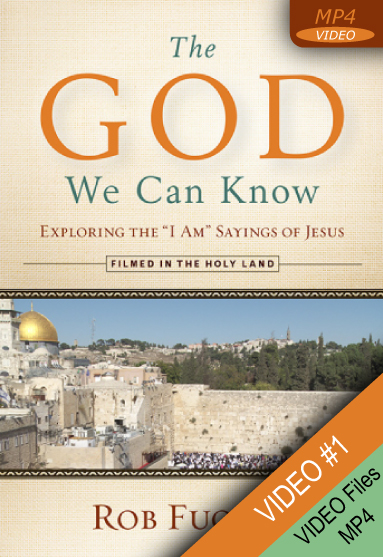- Online Learning
-
- Advent
- Bible Study
- Caregiving
- Children
- Clergy & Laity
- Companions in Christ
- Creativity
- Devotional
- Discipleship
- Generosity
- Grief
- Healing & Wholeness
- Hospitality
- Legacy
- Lent
- Men
- Missions
- Older Adults
- Pentecost
- Prayer
- Recovery
- Series
- Social Justice
- Spiritual Gifts
- Spiritual Practice
- Stewardship
- Women
- Young Adults
- Youth
In stock

The God We Can Know Session 1 - Knowing the Great "I Am"
Knowing the Great "I Am"
by Rob Fuquay
Video
Discipleship
Lent
Series
In this video, Rob Fuquay helps us learn the background of the words "I Am" in scripture.
Filmed in the Holy Land, the video begins in the desert, where God spoke the words "I Am" to Moses. Through Moses's encounter with the burning bush, God called Moses to return to Egypt and tell Pharaoh, "Let my people go!" Moses asked God, "If the people ask who sent me, what shall I say?" God replied, "Tell the Israelites 'I Am' has sent you."
Twelve hundred years later, Jesus used the words "I Am" to refer to himself, employing images of bread, light, shepherding, and grapevines. Rob Fuquay takes us to Congregation Beth-El Zedeck in Indianapolis, Indiana, where he speaks with senior rabbi Dennis Sasso.
Jesus' language in the "I Am" statements is straight out of first-century Judaism, Sasso says, and Jesus' Jewish audience would have resonated with his statements. In Jewish teaching, the Torah is often referred to as the bread of life. Sasso explains that light symbolizes the soul. He also mentions the vine as a symbol of the people, or community, that God protects, nurtures, and keeps. The Ten Commandments open with the words "I Am," he notes. In this video you will hear cantor Melissa Cohen chant the opening words of the Ten Commandments in Hebrew.